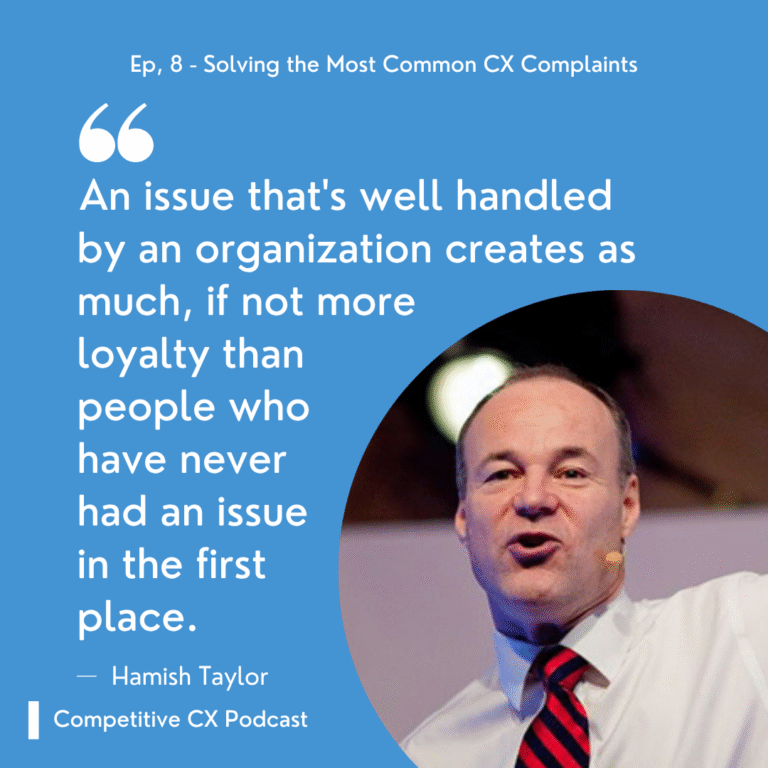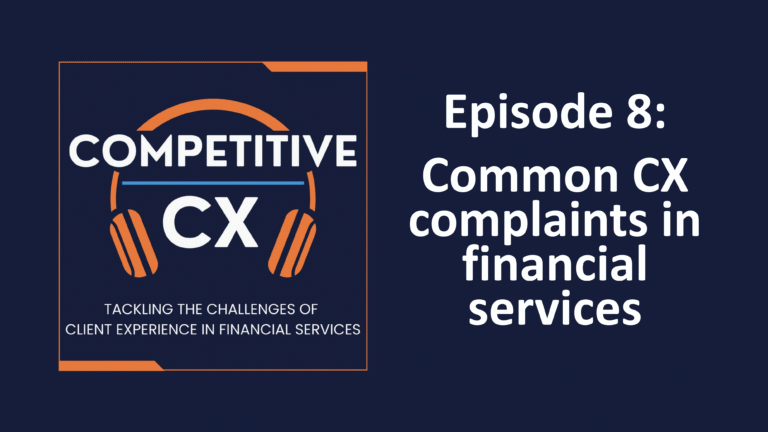In brief
Many of the most common CX complaints in financial services stem not from service failures, but from poor communication and design. In this episode of Competitive CX, Grainger, Taylor, and Aimer explore how client frustration often signals unmet behavioural needs – from slow onboarding to over-complex comms. Firms that treat complaints as early warnings can redesign journeys that earn deeper trust and loyalty.
What if your biggest CX complaint was actually your biggest opportunity?
In Episode 8 of Competitive CX, Melanie Aimer, Hamish Taylor, and Adam Grainger explain how to fix the most common CX complaints in financial services – and offer pragmatic solutions grounded in behavioural insight, operational change, and empathy.
The team gives examples of poor client experience in finance and argues that many complaints aren’t about what went wrong, but how it was handled.
From improving onboarding and responsiveness in CX to avoiding overwhelming comms, they highlight the client behaviours behind each issue – and what firms must do to fix them.
The message is clear: client dissatisfaction isn’t a nuisance to suppress, it’s a source of strategic intelligence. The best firms treat complaints not as failures, but as early signals to redesign journeys, improve culture, and earn loyalty.
Solving the most common CX complaints in financial services
In this episode, the Competitive CX team breaks down the most common CX complaints in financial services – and how to fix them.
Taylor emphasises that loyalty comes not from a lack of problems, but from how issues are handled. “Communicate, communicate, communicate,” he urges – especially during uncertainty.
Aimer focuses on response speed. She calls it the easiest issue to solve and criticises delays and broken handoffs that damage trust.
Grainger presents a behavioural science lens, showing ways in which onboarding complexity, over-communication, and poor responsiveness drive disengagement. He reminds us: “Your silence rate is not the same as your success rate. Look at their behaviour and their activity levels. Just because clients aren’t complaining doesn’t mean they’re satisfied. Actions (or inaction) speak louder than words.”
Together, they promote empathy, ownership, and transparency – not just as fixes, but as competitive advantages.



Key Takeaways
- Most CX complaints are about how problems are handled – not the problems themselves.
- Proactive communication reduces anxiety and builds loyalty.
- Empathy can’t be scripted – it must be recruited, empowered, and modelled.
- Slow responses are fixable and often reflect poor ownership, not capacity.
- Onboarding complexity is a silent killer – simplify and digitise.
- Over-communication erodes trust; personalisation is key.
- “A complaint is a gift” – track it, learn from it, and use it to improve CX.
If you’re an asset manager, check out Accomplish’s client experience services here.
And if you just found this useful, check out our other podcast episodes designed for financial services professionals:
- Why care about CX?
- What is CX and who should own it?
- Cultures that kick CX down the road.
- Organisational structure gets in the way of CX.
- Incentives that inadvertently deprioritise CX.
- Regulator – friend or foe to CX?
- Technology – enabler or disabler for CX?
- Solving the most common CX complaints.
- Where to start with CX?
Listen to the full recordings on Podbean.
Connect with Hamish Taylor, Melanie Aimer and Adam Grainger on LinkedIn and follow Competitive CX for cutting-edge insights on client experience in finance.
Frequently asked questions
1. What are the most common CX complaints in financial services?
Clients often cite slow responses, complex onboarding, poor communication, and lack of personalisation. Many issues aren’t about what went wrong, though, but how the firm responded.
2. Why do CX complaints matter more than surveys or silence?
Complaints reveal unmet client needs in real time. Silence often hides disengagement, while complaints provide actionable insights to improve journeys and build loyalty.
3. How can financial firms reduce client complaints?
Start by simplifying onboarding, speeding up response times, and training staff to take ownership. Firms that personalise communications and track behavioural cues see fewer, better-managed complaints.
4. Can complaints be used to improve CX strategy?
Yes – “a complaint is a gift.” Tracking complaint themes helps identify broken processes, friction points, and cultural gaps. Smart firms use this data to drive CX design decisions.








